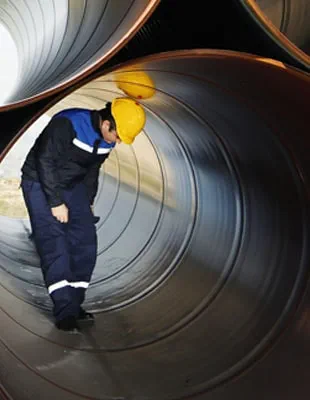Table of Contents
The challenge
Climate change impacts – from heatwaves to flooding - can cause damage to buildings of all types. Our client needed to understand and protect against the risks it might experience across its portfolio.
1,200 buildings
The impacts of climate change are being felt all around the world. Temperatures are rising, rainfall patterns are changing, and our vulnerability to extreme weather events such as heatwaves and floods is increasing. This can impact buildings of all types, particularly older properties that are not built to withstand the changing climate patterns we are experiencing today. This was a concern for our client, a UK Government Department responsible for a portfolio of more than 1,200 buildings around the country. The department needed to understand not only how climate change might impact the physical condition of its assets, but also how any consequences – for example from flooding – would disrupt normal day-to-day operations within the building itself. This information was a critical input for the department as it prioritized actions to help mitigate and reduce related risks.
The solution
Our risk assessment and adaptation framework set out an ongoing and iterative process for assessing climate change risks and identifying ongoing adaptation measures over time.
1.6 °C - 4.3°C
In helping our client respond to the scale of the challenge, we needed to strike a balance between reflecting site-specific details concerning individual properties and maintaining a portfolio-level overview of wider climate risks and responses. This meant we had to define a single methodology that could be accurately applied across more than 1,200 building assets owned and managed by our client.
Assessing climate change risk
We started by working with the client to map existing data relating to the location, size, and operation of buildings across its portfolio. This enabled us to develop a greater understanding of any gaps in the data, as well as any assumptions that would be reasonable to make. This paved the way for us to develop a standard methodology for assessing climate risk, which could be applied not only to the existing portfolio but also to any future assets.
-
Read more
We set out to model and plan for both a best-case scenario of potential temperature increases (of 1.6°C by 2100), as well as a worst-case climate scenario (whereby temperature increases could be as high as 4.3°C by 2100). This allowed us to prioritize immediate actions and understand what could happen in the longer term and under more extreme scenarios. In both cases, our climate risk assessment considered the physical impact on the assets themselves, the operation of those assets, and the potential indirect or secondary risks from impacts on supply chain, to give an overall risk score for each building type.
As part of our risk assessment, we looked at building and site information such as age, location, and local sources of energy to help determine climate sensitivity. Case studies of past climate events such as flooding and overheating were also considered. We categorized assets based on characteristics such as building use and occupancy hours, with the potential impacts and consequences of climate hazards assessed across five categories: People, Security, Financial and Commercial, Legal and Reputational.
The results were visualized in our innovative SmartAtlas digital GIS platform, which collects condition data, records, core data, and boundary plans all in one place. This supports quicker decision making and allows us to record live data, as well as superimpose collective future information to make informed ‘right first time’ decisions. The tool was designed in such a way that the client can continuously update information about their assets as more data becomes available. This means that the climate risk levels best represent the current risk based on up-to-date information.
Developing a climate adaptation plan
The results of the risk assessment were then used to inform actions for the adaptation plan. We identified and assessed multiple interventions to test how each applied to different asset categories, how effective these interventions would be, how easily they could be implemented, and how cost-effective they might be. Those deemed easy-to-implement, low-cost and highly effective, were highlighted as ‘quick wins’, while ‘win wins’ were those that mitigate against more than one hazard and/or were advantageous to more than one asset.
From here, we developed an adaptation framework that established an ongoing and iterative process for assessing climate change risks and identifying ongoing adaptation actions. Given the high degree of uncertainty associated with climate change decision-making, this approach allowed us to prioritize immediate actions while recognizing that there are many possible ways to respond to climate change.
The impact
Our client has the knowledge it needs to better manage its buildings over the longer term, regardless of different climate change scenarios or the severity of climate-related impacts.
Better understanding
Our approach has given the client a better understanding of both current and future risks associated with the impacts of climate change across its property portfolio. By combining our expertise in climate risk assessment, we have developed a flexible approach that maximized both the accuracy and usefulness of the outputs.
In developing an adaptation framework for this particular client, we outlined a comprehensive and flexible approach to identify, manage, and mitigate near-term risks, while simultaneously allowing for later improvements in data and climate change responses. In turn, this supports more detailed, evidence-based risk assessments over time, allowing for the development of new adaptation pathways as more information becomes available, or as more assets are added to the portfolio.
This gave our client of the knowledge it needs to better manage its buildings over the longer term, future-proofing the portfolio while considering different climate change scenarios and the severity of potential climate-related impacts.
Not done reading?
This also might be interesting for you
- Related Projects
- Related Insights
- Related Blogs










